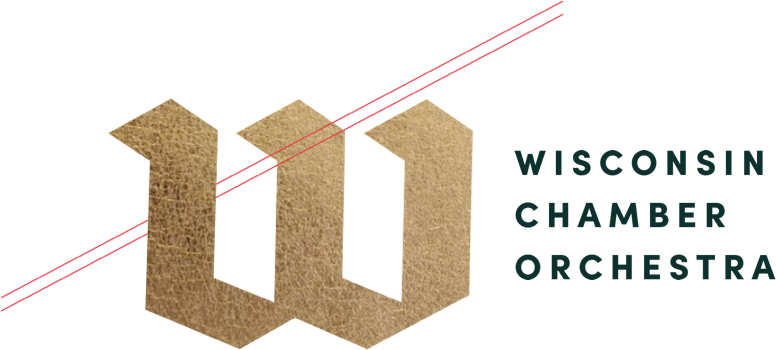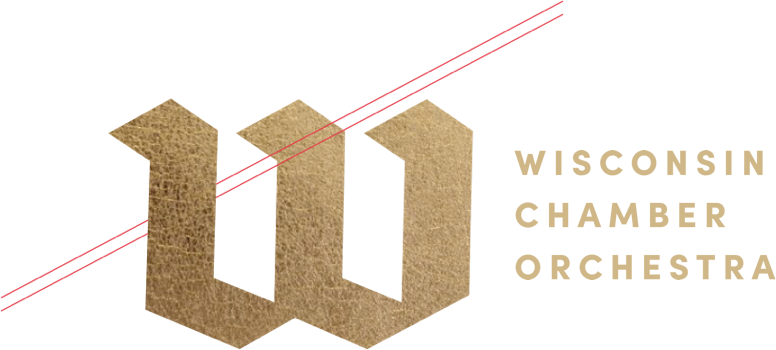A Warm Wisconsin Welcome
The Wisconsin Chamber Orchestra is a team of musicians selected to perform in one of the most creative, caring, daring, and down-to-earth cities in the country. As a chamber orchestra, we are a third the size of a symphony, which makes for a more intimate musical experience, more personal and inclusive.
So, whether you’re a long-time classical lover or dipping your toe in the water for the first time, use this handy guide of Frequently Asked Questions to make the most of your concert experience.
What's a good seat?
Good question! The two best locations tend to be in the center and at the front of the balcony.
Why the center is a favorite: Some patrons like to find seating not too close to the front as that helps the sound blend a little better by the time it hits your ears (plus you can see more of the musicians when you’re not right up by the stage).
The front of the balcony gives you a bird’s eye view: At the front of the balcony (including box seats), you have better sight lines to see the entire orchestra from more of an aerial perspective. Lastly, if there is a piano soloist performing, people like to sit more towards the left side of the house so that they can see the pianist’s hands as he or she performs.
For a little more legroom at Capitol Theater, take a seat in the Main Floor Orchestra section.
How do ticket prices differ?
Ticket prices range from $22 to $120 per seat, depending on the concert and your location preference. On occasion, special rates may be offered. See seating map.
Season subscriptions are available for the Masterworks concert series! Subscribers will receive special rates when purchasing tickets for 3 or 5 concerts per season. Plus, first-time new subscribers receive 20% off single ticket prices.
We also offer special group rates. Please inquire.
Do you have student discounts?
We offer student rate subscription packages starting at $40 for 3 concerts, and we also have student rush tickets available the week of the concert, starting at $17 a ticket if they present a valid student ID at the Overture Center Box Office; this cannot be redeemed online or over the phone. Four redemptions per ID. Seating options are dependent on availability.
For more information on student subscription packages, contact Luci Randall, Marketing Associate at lucirandall@wcoconcerts.org.
What should I wear?
Come as you are! Music is all about the senses, so we want you to be comfortable while you enjoy it. Most of our attendees wear anything from jeans to dressy clothes.
Generally speaking, if you’d wear it to work or out for a dinner date, you can wear it to a WCO concert. Family performances are much more casual than evening performances, especially with the kiddos along. For our special events and annual galas, put on the ritz.
When do I clap?
The short answer: applaud when you feel so moved. When music is stirring, uplifting, and emotive, it is indeed tough to hold back. Our advice as former first-timers? Follow the lead of the classical music lovers seated around you during the first part of the performance. If you are unsure, wait for others to start clapping and then join in.
Many pieces of music are divided into sections or chapters called movements. Most people don’t clap between movements, waiting until the very end of the piece to applaud. However, our point of view is to applaud and celebrate the music if it stirs you to do so. Enjoy it! The musicians and the maestro will be delighted.
When can I talk?
Chat pre-concert (before the musicians are settled on stage and Maestro Sewell has taken the podium) and at intermission.
When should I arrive?
Plan to arrive at the theater 30 minutes before the start of the concert to allow time to park, visit Will Call, enjoy a cocktail, and make your way to your seat.
Do you serve drinks and cocktails in the theater?
Cocktails, wine, beer, and non-alcoholic beverages are available at the various cocktail bars at Capitol Theater.
How long are the concerts?
Most concerts run about 1.5 to 2 hours, including a 15-20 minute intermission. Check the concert event page for a more specific estimate.
Generally speaking, our outdoor Concerts on the Square performances last 1 hour and 45 minutes with an intermission. Masterworks, our indoor concert series, typically opens with an overture or other shorter work about 10 minutes or so in length. That’s usually followed by a concerto (a piece with a featured soloist) for another 20-30 minutes, and then comes intermission for another 15-20 minutes.
The second half of the performance is often a full symphony of four or more individual movements, totaling 40-60 minutes. This isn’t always the format, but directionally, we hope it helps you know what to expect.
Can I take pictures or video?
- During the performance, please silence your phone.
- Non-flash photography is permitted only during moments of applause, not during performance.
- Audio and video recordings are not allowed.
- Please be considerate of your neighbors and the musicians. Use of smartphones and other devices can be distracting.
Can I text if it doesn’t make any noise?
We ask that you save texting for intermission. You are welcome to step into the lobby should you need to communicate via text. Thank you for being considerate.
Can I bring my child to a concert?
Youngsters age 6 and up are welcome at WCO concerts when accompanied by an adult. Everyone, regardless of age, must have a ticket to enter the hall. Families with younger children are encouraged to join us for our free Family Series performances throughout the year. For more information and concert recommendations, please call our office at 608.257.0638 or check out the upcoming Family Series.
How many musicians are in the chamber orchestra?
The Wisconsin Chamber Orchestra is a traditional chamber orchestra, with 30-34 musicians. About half of those are strings. In comparison, the chamber orchestra is about 1/3 the size of a symphony orchestra, which usually has about 90 musicians and about 60 strings.
So, with us, you’ll be delighted to hear every instrument, every musician. The level of expertise and musicianship must be extremely high, as the sound of each musician is more “exposed” than in a larger ensemble. The challenge and opportunity of a chamber orchestra is to fill each seat with a musician of soloist quality – each musician is as talented as any soloist. Each musician’s attention to detail, clarity of line, and performance energy is evident. The overall effect for our audience is a sound that is clean, intimate, and compelling.
What’s the origin of chamber orchestras?
Chamber orchestras precede the modern-day symphony. There is a wealth of repertoire written for chamber orchestras. Virtually all orchestral music of both the Baroque and Classical periods (approximately 1600 to 1825) was written for chamber orchestras. Prominent composers of these periods include Vivaldi, Bach, Handel, Mozart, and Haydn.
During the nineteenth century, when orchestras swelled in size to perform symphonic works of the Romantic period, composers such as Saint-Saëns, Brahms, and Dvořák continued to write chamber works. Many twentieth-century composers, including Stravinsky, Schoenberg, Villa Lobos, Bartok, and Copland, produced work for chamber orchestras.

Getting Here
Get to Madison


